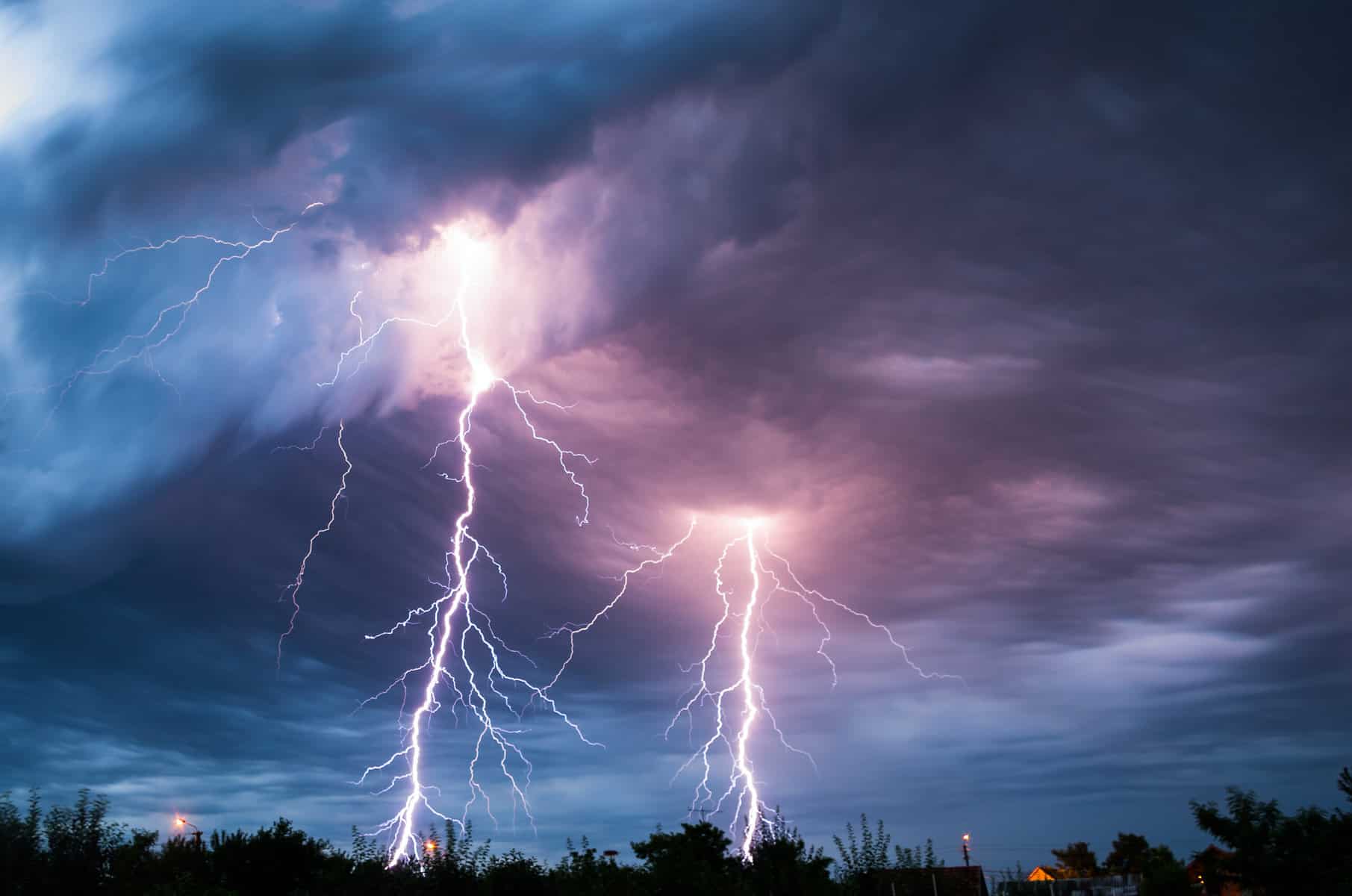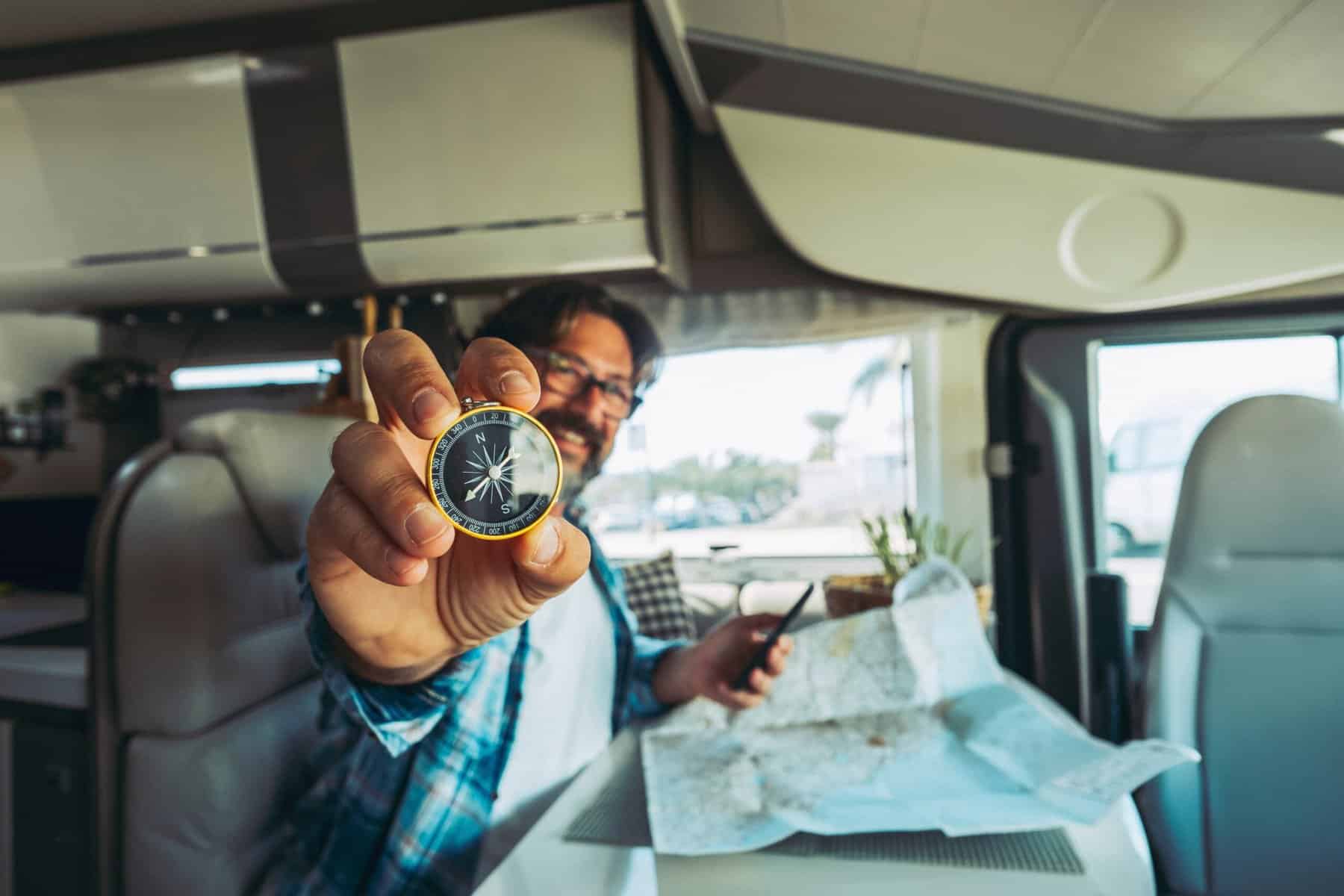Are you prepared for a medical emergency away from your RV? This active RVer emergency kit gets you ready for anything
If you are the type of RVer who likes to basecamp in an area, then spend days immersing yourself and exploring the surrounding backcountry, far from others, this emergency preparedness advice is for you.
Don’t Go Boondocking, Hiking, or Off-Roading Without These Things
I used to think I was well-prepared. After all, I’m an active RVer, and trained search and rescue volunteer who enjoys being out and about in the backcountry. I am trained in first aid, CPR, map and compass (land navigation), rescue techniques, avalanche safety, search techniques, survival, GPS and more.
Despite my training, I’m still learning about backcountry and boondocking safety. Over the past few years, I have been involved in two emergency situations while exploring with our RVing friends. Both involved major injuries requiring on-scene medical aid followed by extraction to a hospital. In both incidents, I learned how I and everyone with me could have been better prepared.
The day pack I carry when out and about is always equipped with the Classic Ten Essential Emergency Items described below. I also carry other supplies. Read on to learn how you can be better prepared yourself.
10 Essentials for the Active RVer Emergency Kit.
Let’s start with the basics. Anyone who loves hiking and exploring the backcountry should carry the Classic Ten Essentials:
Why Go Beyond the Ten Essentials?
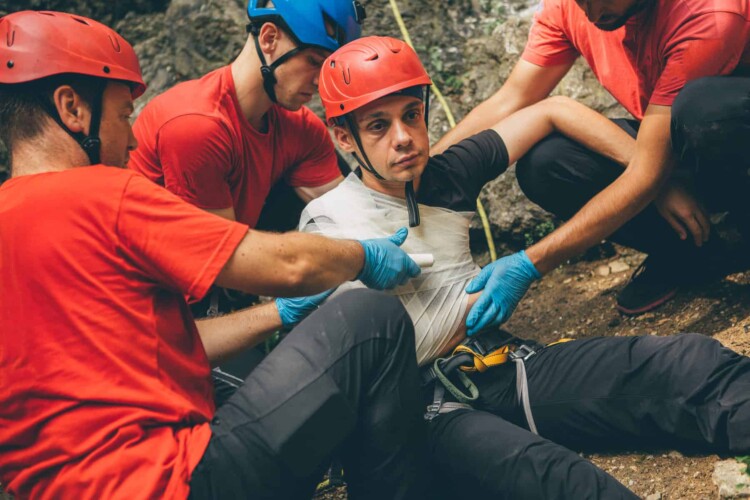
Here is what I have learned from my two backcountry emergency experiences:
The first experience occurred at nearly 10,000 foot elevation in the Rocky Mountains of Montana. We were over 25 miles from our RVs. Our friends rolled their ATV near an old mining camp, we explored, causing trauma to both and briefly knocking one unconscious.
After assessing the situation, it became clear that one of them would need to be transported out of the backcountry. They needed to go to the hospital via something other than an ATV. Fortunately, we all carried Spot satellite messenger devices. This allowed us to alert first responders.
Because of that ATV rollover incident, I now carry a few extra items in my emergency kit. Here is what they include.
More items for an Active RVer Emegency Kit
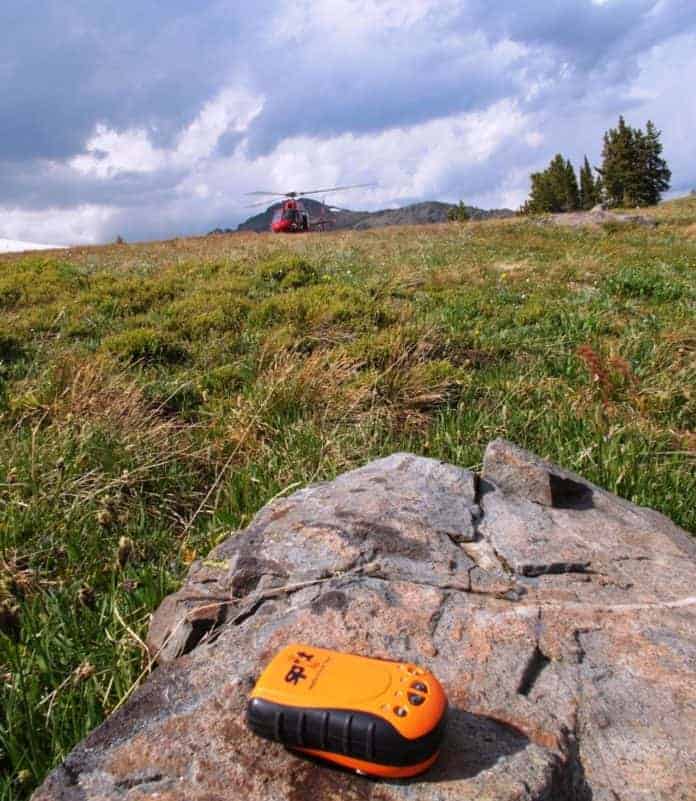
Click on each item to find out why I recommend these for your first-aid and RVer emergency kit supplies.
Pen and Paper
Shortly after the accident, another ATV approached us with two people aboard. Fortunately, the passenger was a registered nurse. The driver was a local, familiar with the area. Cell service was non-existent, but she knew where the nearest landline was located. It was over 10 miles away!
The Spot devices only let first responders know we needed rescue services. It also shared our location. Only the ATV driver could relay full details of the emergency. I informed the ATV driver of what the first responders would need to know, such as age, sex and known injuries of the subject.
As I tried to find something to write the information down on, she assured me she had the “facts” and quickly departed to find a landline. When the ATV driver called 911, the age of the subject was not shared with first responders. This led to confusion over who in our party was hurt. Lesson learned: carry pen and paper. This lets you write full details for the reporting party.
Clear Eye Wear
The trip to the old mining camp was only expected to last for the day. Since it was a beautiful sunny summer day, I chose to wear sunglasses for eye protection as we rode.
Our injured friend was airlifted from the scene of the accident, so we returned to camp. However, due to the time it took for rescuers to reach us, we were losing daylight. I only had my sunglasses for eye protection. Riding in diminishing light could have led to yet another accident. Luckily, I made it back to our RVs safely. Now I have a pair of clear safety glasses stored in my RVer emergency kit, in case I ever find myself in a similar situation.
2-Way Satellite Communication Device
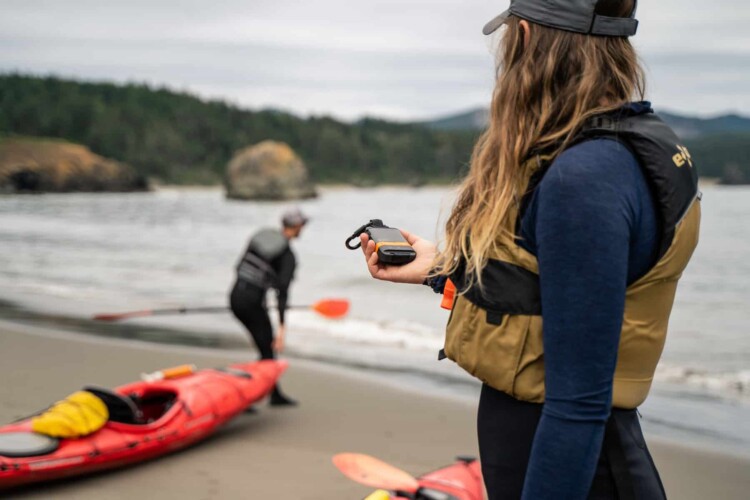
The Spot GPS satellite messenger devices we carried only provided limited one-way communication. Those devices immediately told first responders about our emergency and exact location. But they couldn’t share details about the emergency itself. Responders didn’t know if it was a lost hiker call. Or if we were dealing with mechanical breakdown, injury, etc.
The ability to supply details of the emergency would have been comforting. Receiving a reply along with estimated time of arrival would have been nice too. Since that incident, I upgraded to a Spot X. This satellite communication device allows users to send a custom typed message to 911. Or, you can send a message to any cell phone from anywhere and receive a reply.
- Pro Tip: The iPhone 14 provides a similar 2-way messenger service.
Bug Spray
I had bug spray in my pack when this incident occurred. But I want to share why I am glad I had it. And also why you should carry it too.
We waited hours for emergency personnel to reach our remote location. Meanwhile, mosquitoes found us much quicker. The situation would have been miserable if we were unable to defend ourselves from the mosquitoes while we waited.
A second incident taught me to carry a few more items.
This accident occurred in a large 200-acre park with a campground and extensive trail system. We camped in the park with our RVing friends, and we went hiking on the trail system. After hiking a fair distance from our RVs, my wife slipped on a rock dislocating and breaking her ankle.
My wife was unable to move so Emergency services got called to the scene. I had a copy of the trail map open on my phone, and provided a precise location to the rescue team. Then I gave the name of the trail. The 911 operator confirmed our location via the GPS signal from my phone.
First responders quickly arrived on scene. My wife was given pain medication. Then her ankle was placed in an inflatable boot and she was loaded onto a stretcher. She was then carried to the aid unit and transported to the local hospital as the sun set. As a result of this accident, here are the additional RVer emergency kit items I carry today to be better prepared:
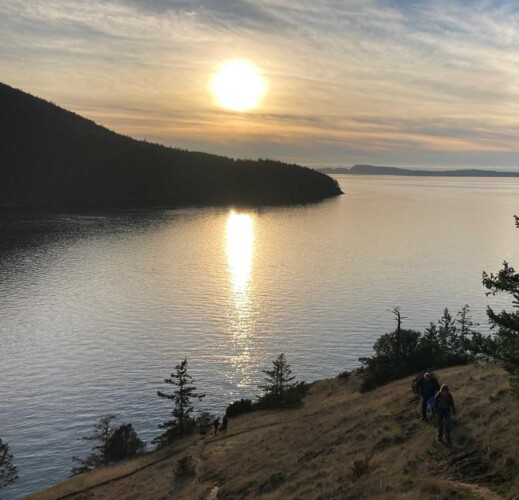
List of Medications
My wife is on many prescription medications, few of which I can name from memory. Fortunately, she was coherent enough to be able to name them off to those providing her medical attention. But what if she was knocked unconscious? Now I have a list of her medications and medical conditions tucked away in my pack.
Maps for Everyone
My phone had a map for the park’s trail system. I had the presence of mind to email it to our friends as I jumped into the ambulance with my wife. Later I learned they were unable to open it on their phones. No map meant they had to find their way back to the RVs on their own. They returned the way we went in. This was much longer than the way they could have gone, if they had a map. With no flashlights, they found their way back to our RVs in the dark. Everyone will be better prepared with their own map for future excursions.
Flashlights for Everyone
A flashlight is one of the ten essentials. I had one in my pack, but it didn’t do our friends any good when they had to trek back to our RVs while I was on the way to the hospital with my wife. Everybody in the group needs their own flashlight.
- Pro Tip: Your cell phone is not an adequate substitute for a flashlight.
Photo Identification
We were just out for a hike around the park, so my wife and I left our photo ID in the RV. Not having ID at the hospital was not helpful. From now on, my photo ID is on my person at all times. That’s even when just out for a hike around the campground.
Medical Insurance Cards
Our medical insurance cards were also with our photo IDs in the RV. Today, copies of our insurance cards stay in my day pack.
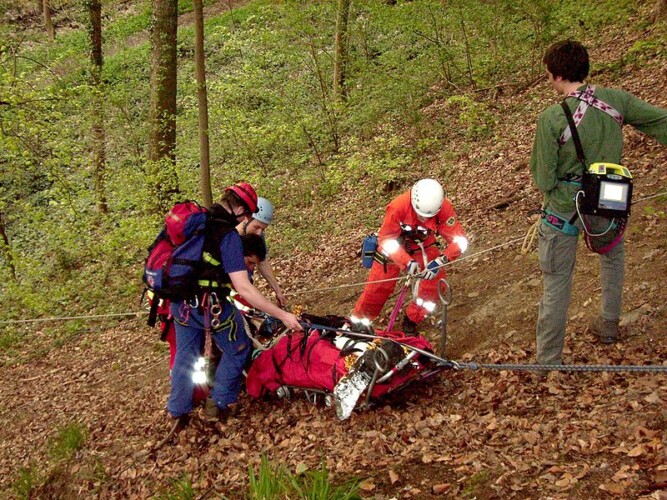
René Kieselmann rmk (Bergwacht Schwarzwald e.V., BWS), CC BY-SA 2.0 DE, via Wikimedia Commons
Access to Each Other’s Vehicles and RVs
I jump in the ambulance with my wife, and had the presence of mind to hand my RV keys to our friends. This allowed them to locate our photo ID and insurance cards. They texted us a copy to share with the hospital. Doctors reset and splinted my wife’s ankle. Later, our friends drove our pickup truck to retrieve u from the emergency room. In the previous incident (the ATV rollover), getting our friend’s RV key let us care for their dog.
I pray there will never be another mishap while exploring with our RVing friends. But if so, I am now more prepared than ever in the event of an unexpected medical emergency. I hope this article helps other adventurous RVers like you be fully prepared too.

